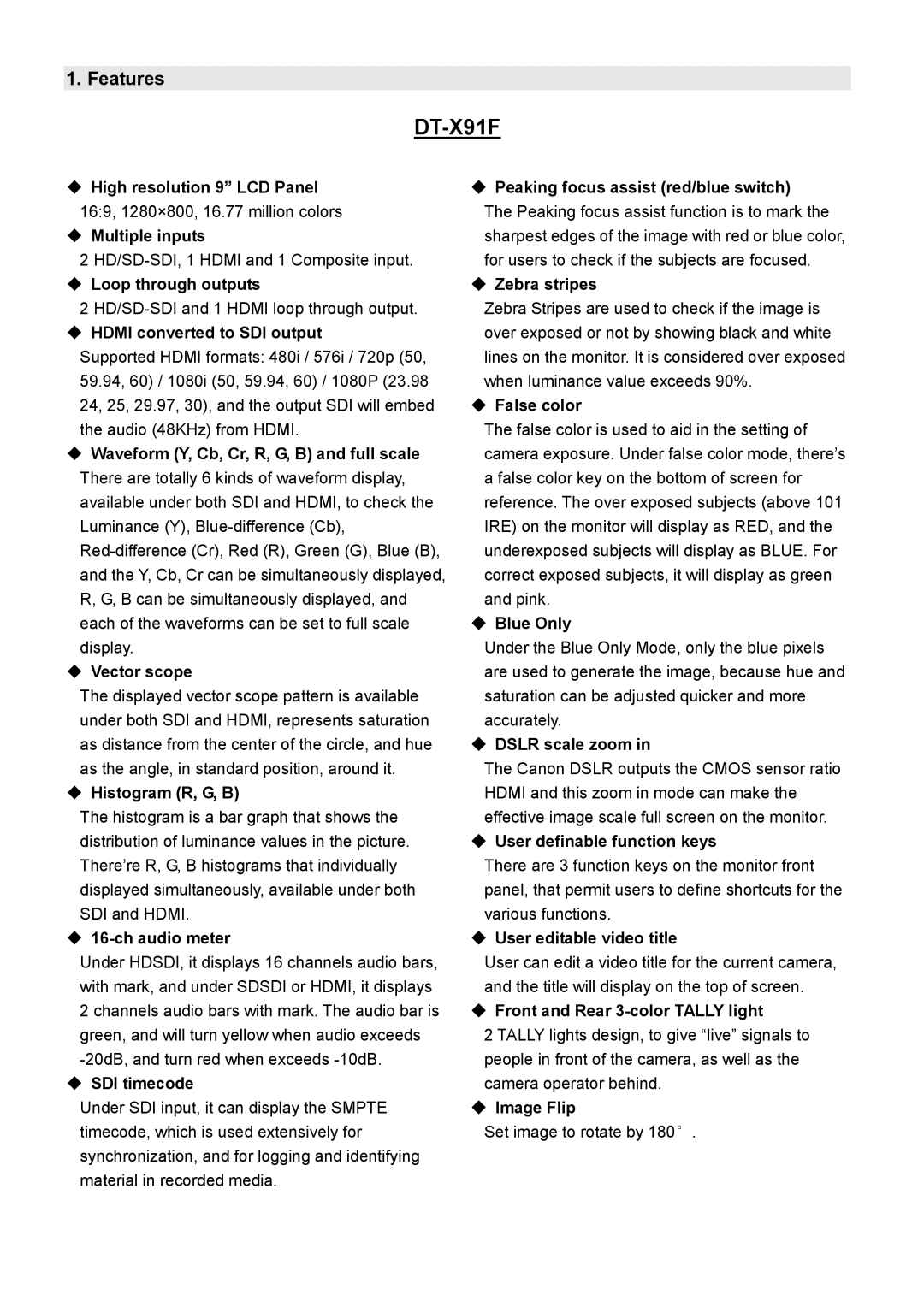DT-X91H, DT-X91C, DT-X91F specifications
The JVC DT-X91F, DT-X91C, and DT-X91H monitors represent a significant leap in professional video display technology, tailored for both field and studio use. These models are known for their superb picture quality, robust build, and advanced features that cater to the needs of videographers, broadcasters, and content creators alike.A standout feature across the DT-X91 series is the high-resolution 9-inch display, which utilizes a cutting-edge LCD panel. This panel ensures vivid colors, deep blacks, and excellent contrast, making it ideal for critical monitoring tasks. The resolution of 1920 x 1200 pixels provides a sharp and clear image, allowing users to see every detail with precision. Whether in a bright outdoor setting or a dimly lit studio, the monitors are designed to perform exceptionally, thanks to their high brightness levels and anti-glare coating.
One of the key technologies embedded within the DT-X91 monitors is JVC's Color Calibration technology. This ensures that colors displayed are true to the source material, making it an essential tool for professionals working in color grading and correction. The monitors support a wide color gamut, which means they can accurately reproduce a wide range of colors, enhancing the overall viewing experience.
In terms of connectivity, the DT-X91 series is equipped with multiple input options, including HDMI, 3G-SDI, and composite inputs. This versatility allows users to connect various cameras and devices seamlessly. Additionally, the monitors provide both loop-through capabilities and signal conversion, making them adaptable to different production settings.
The ergonomic design of the DT-X91 monitors is another noteworthy characteristic. They come with a built-in tilt function and optional rack mounts, ensuring that users can set them up in various positions for optimal viewing. Lightweight and portable, these monitors are perfect for on-location shoots while still being sturdy enough for studio use.
Furthermore, the DT-X91C model features a built-in waveform monitor andvectorscope, which are indispensable tools for evaluating the color and luminance of video signals. This, along with the range of customizable settings, allows for a high degree of control over the monitoring process.
In summary, the JVC DT-X91F, DT-X91C, and DT-X91H monitors combine exceptional image quality, advanced color calibration, robust connectivity options, and user-friendly design. They are perfect for any professional looking to enhance their video production workflow, ensuring reliable monitoring in a variety of settings. Each model brings its unique features to the table, making the DT-X91 series a versatile solution for today’s demanding visual applications.
